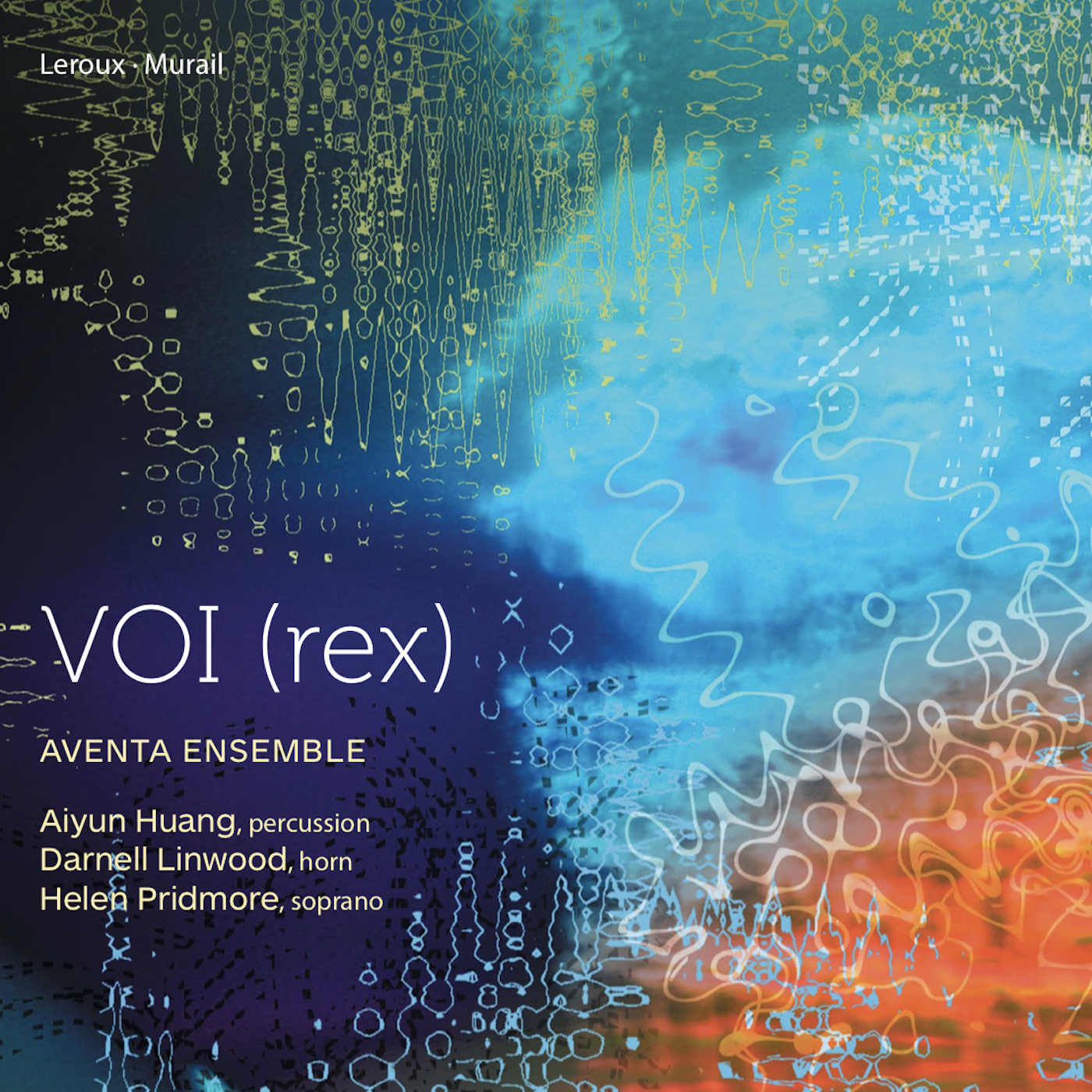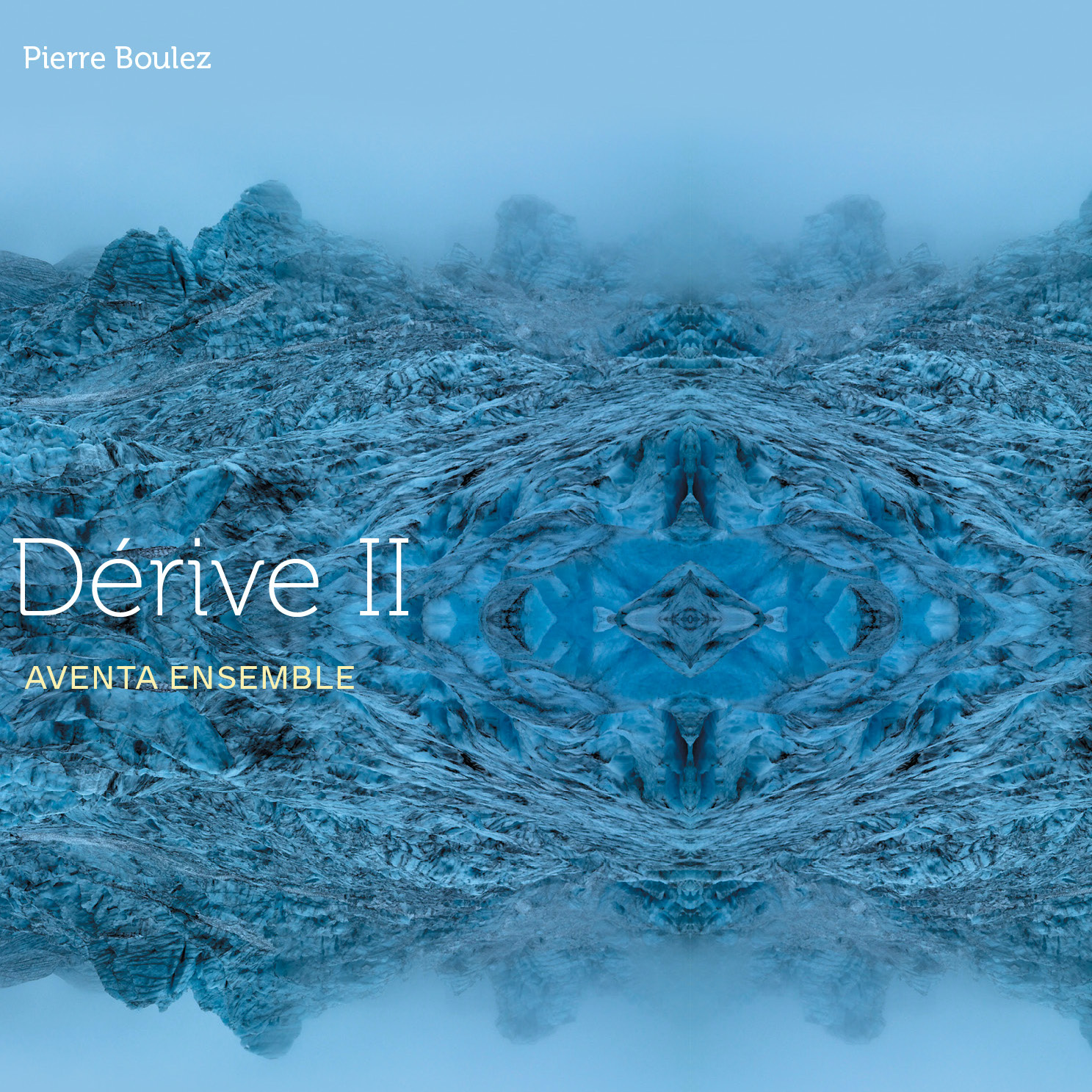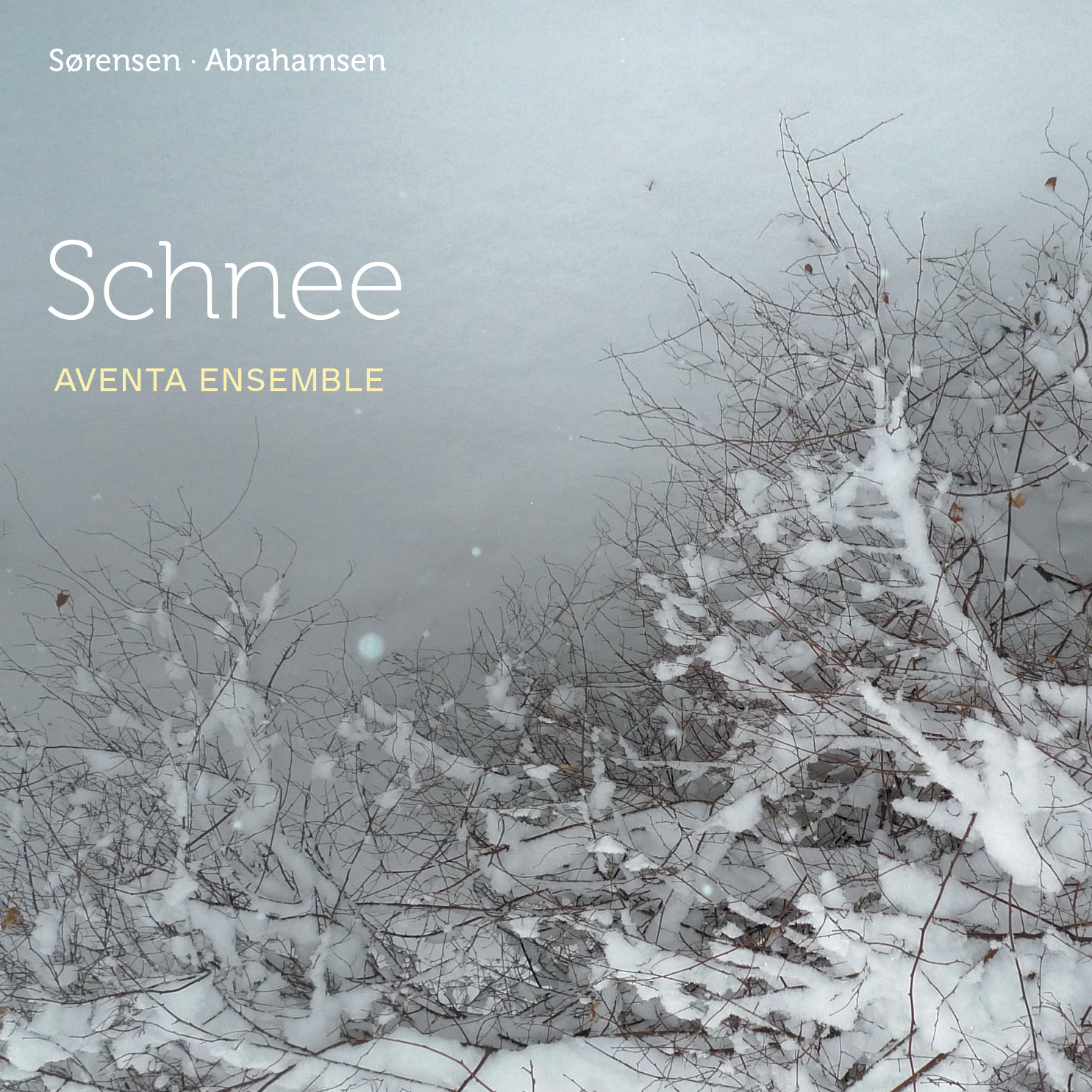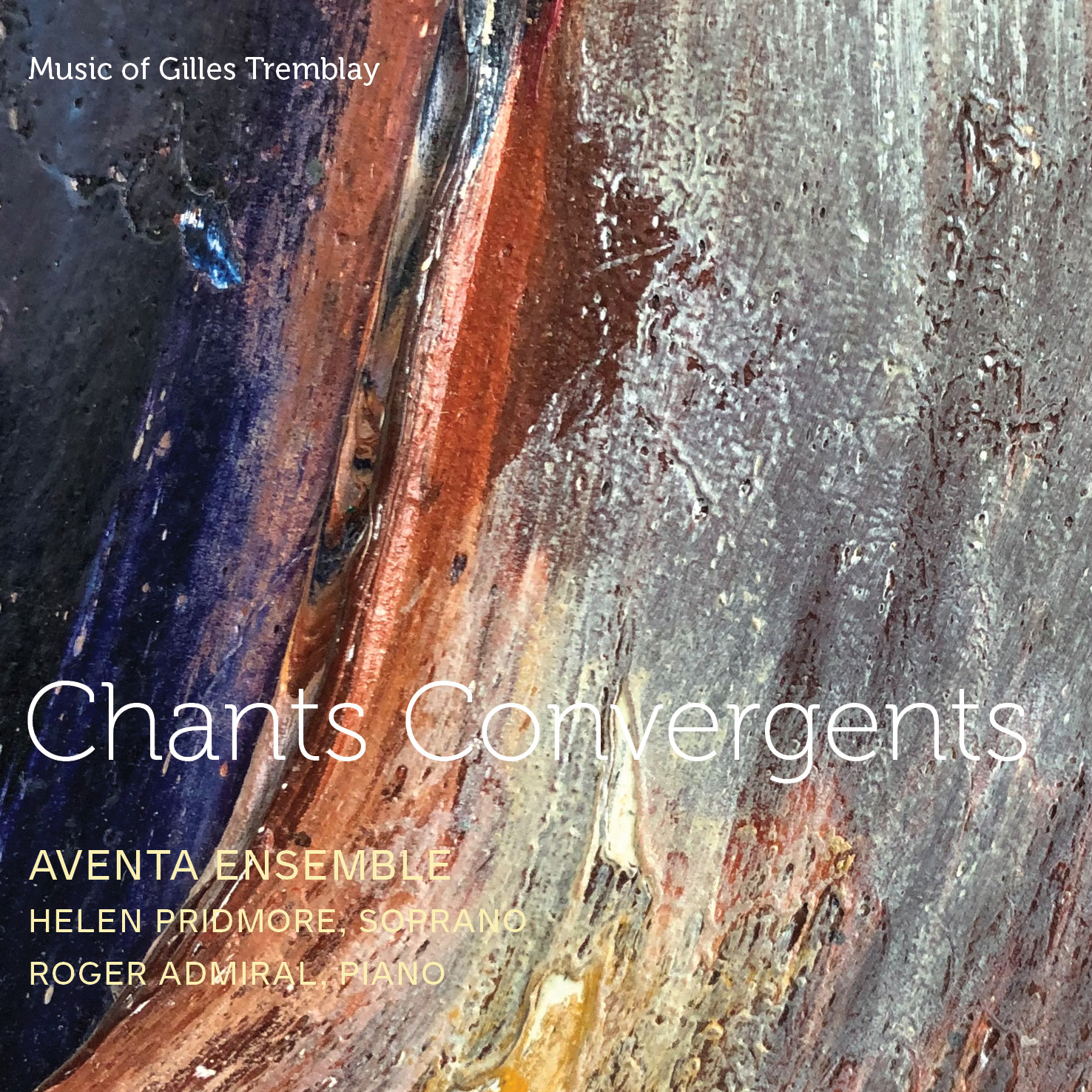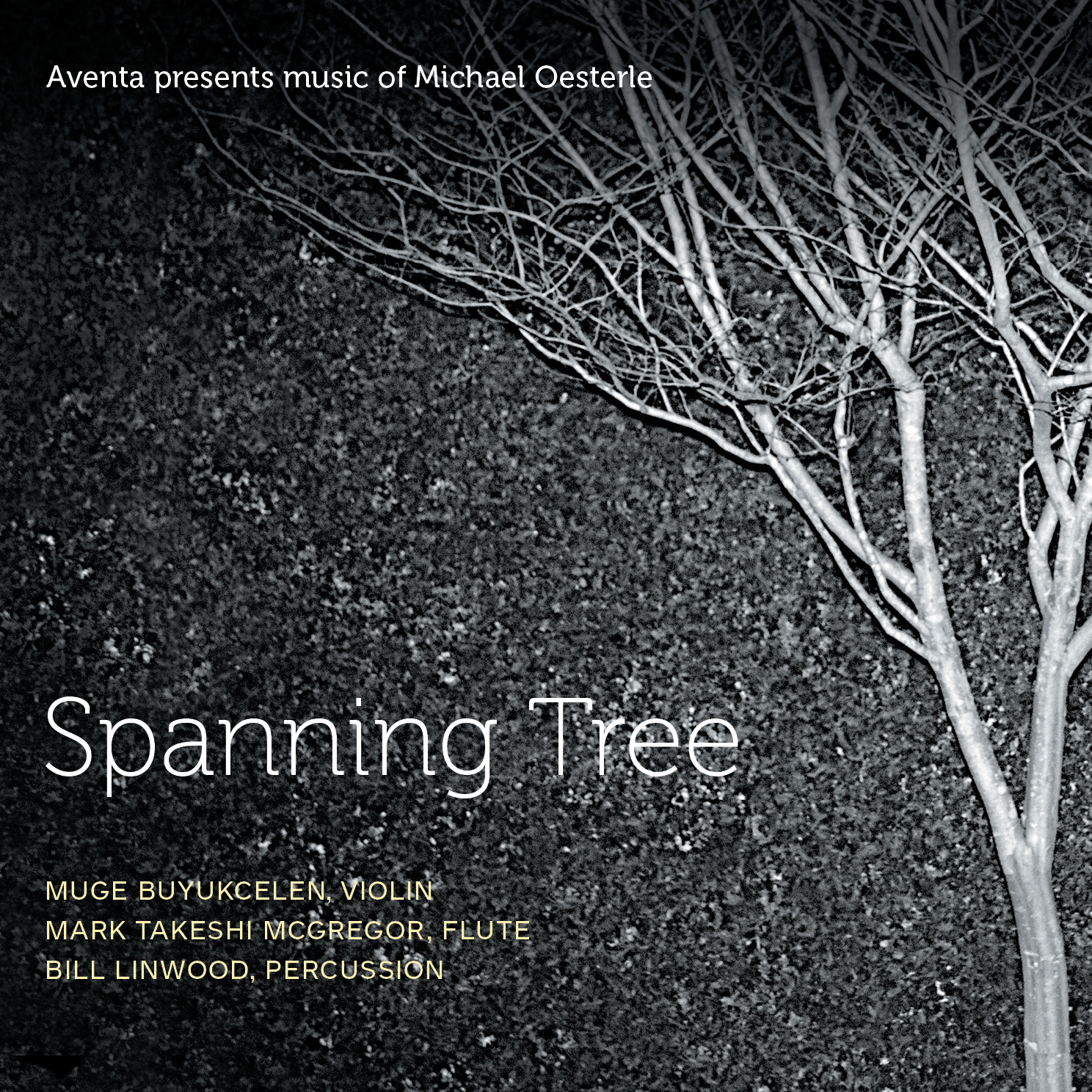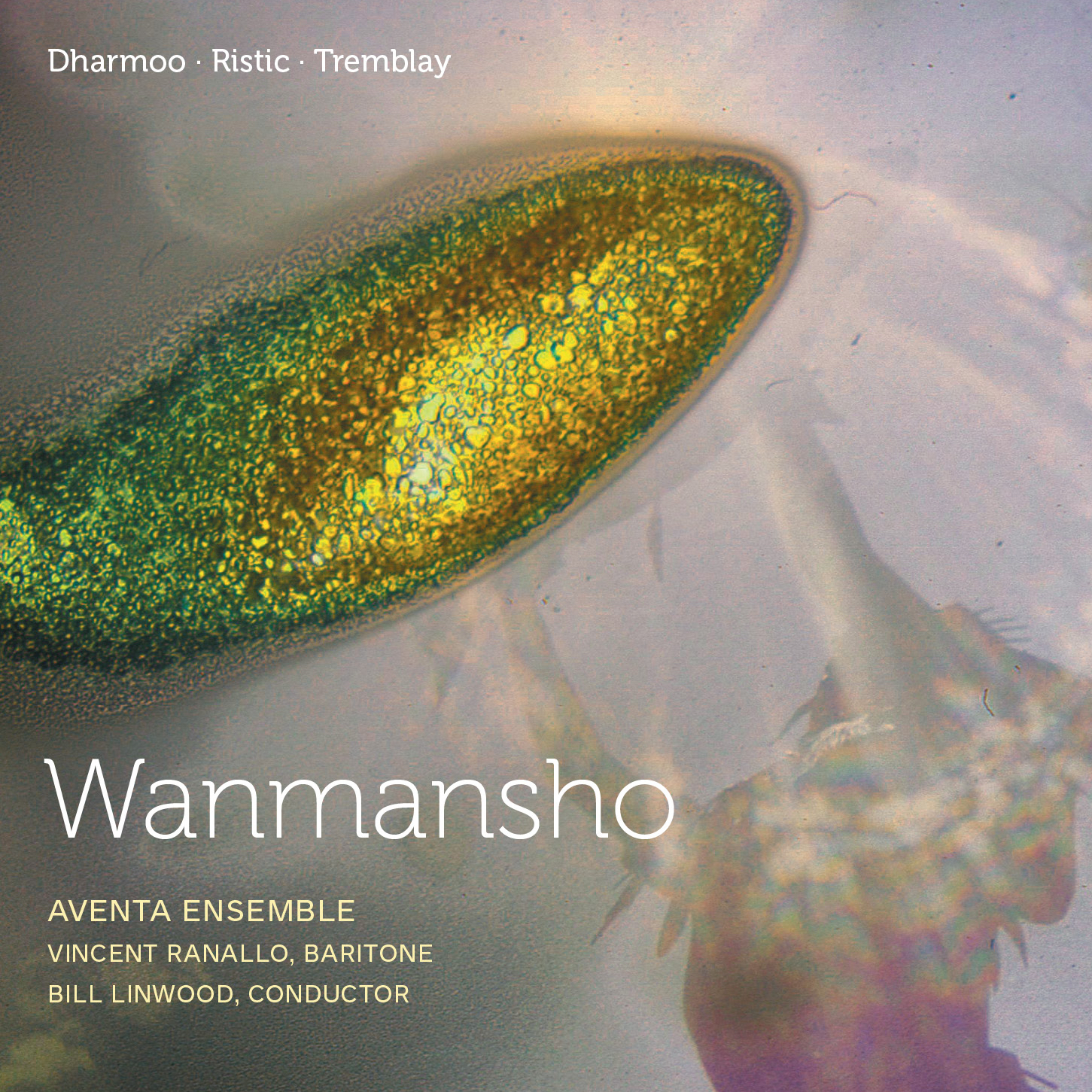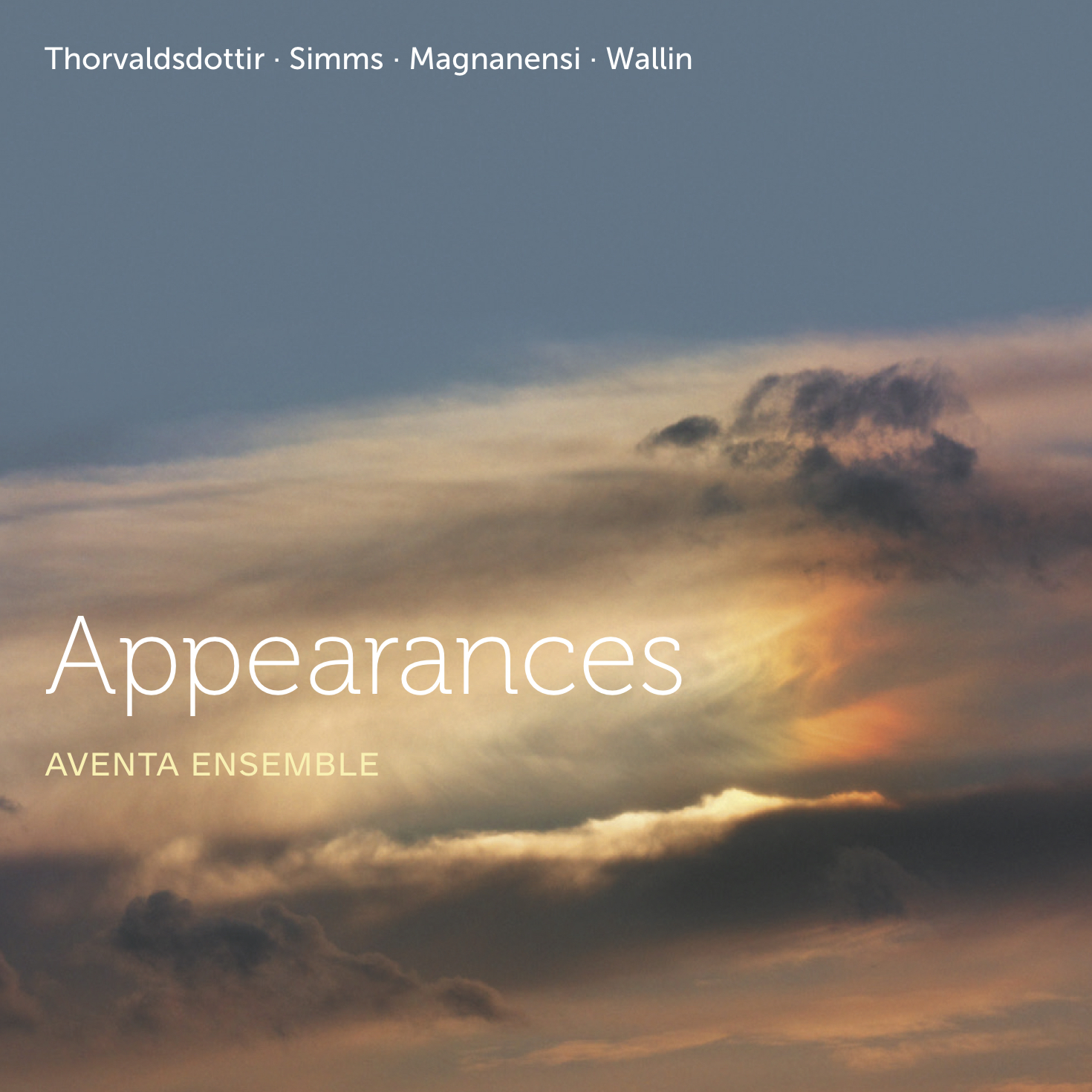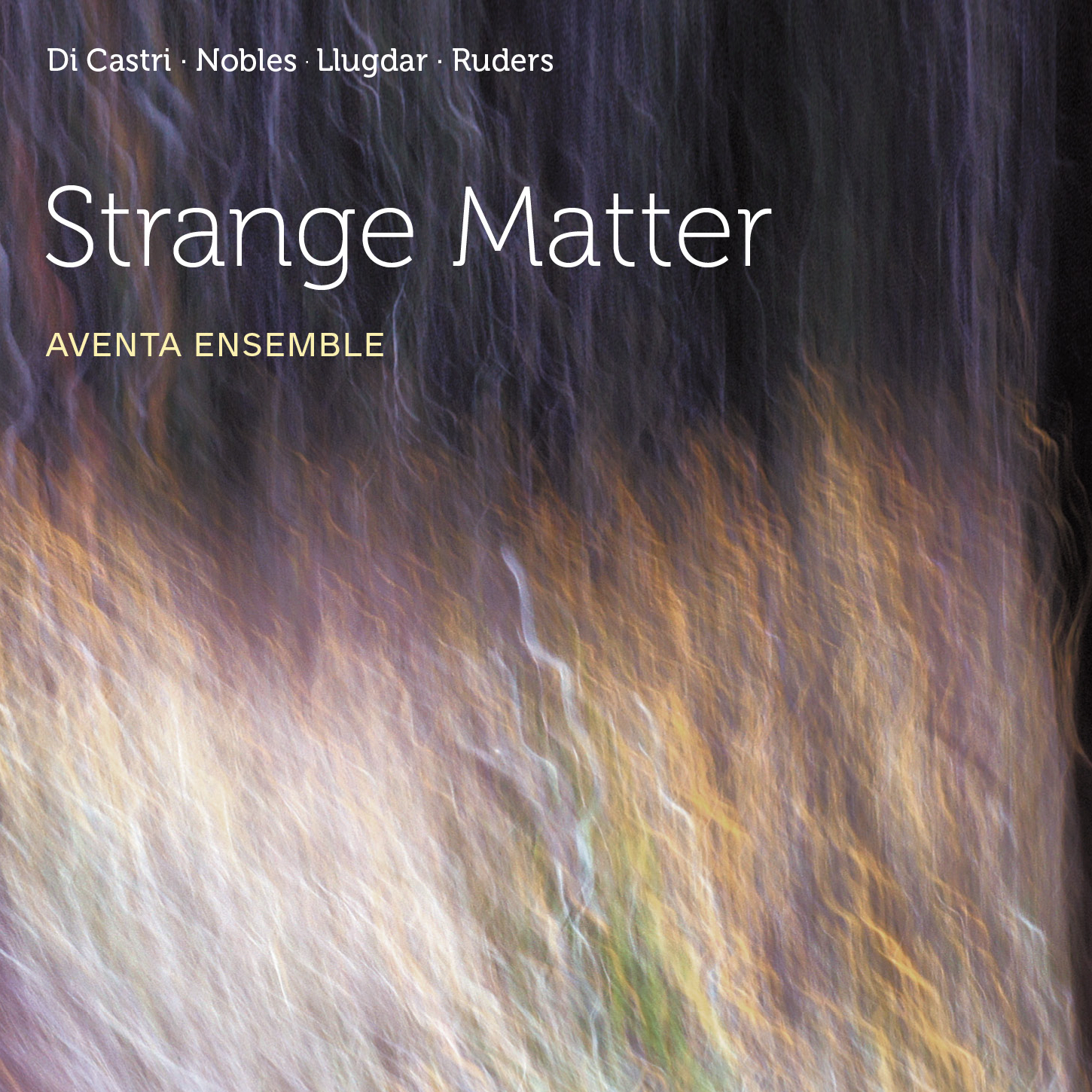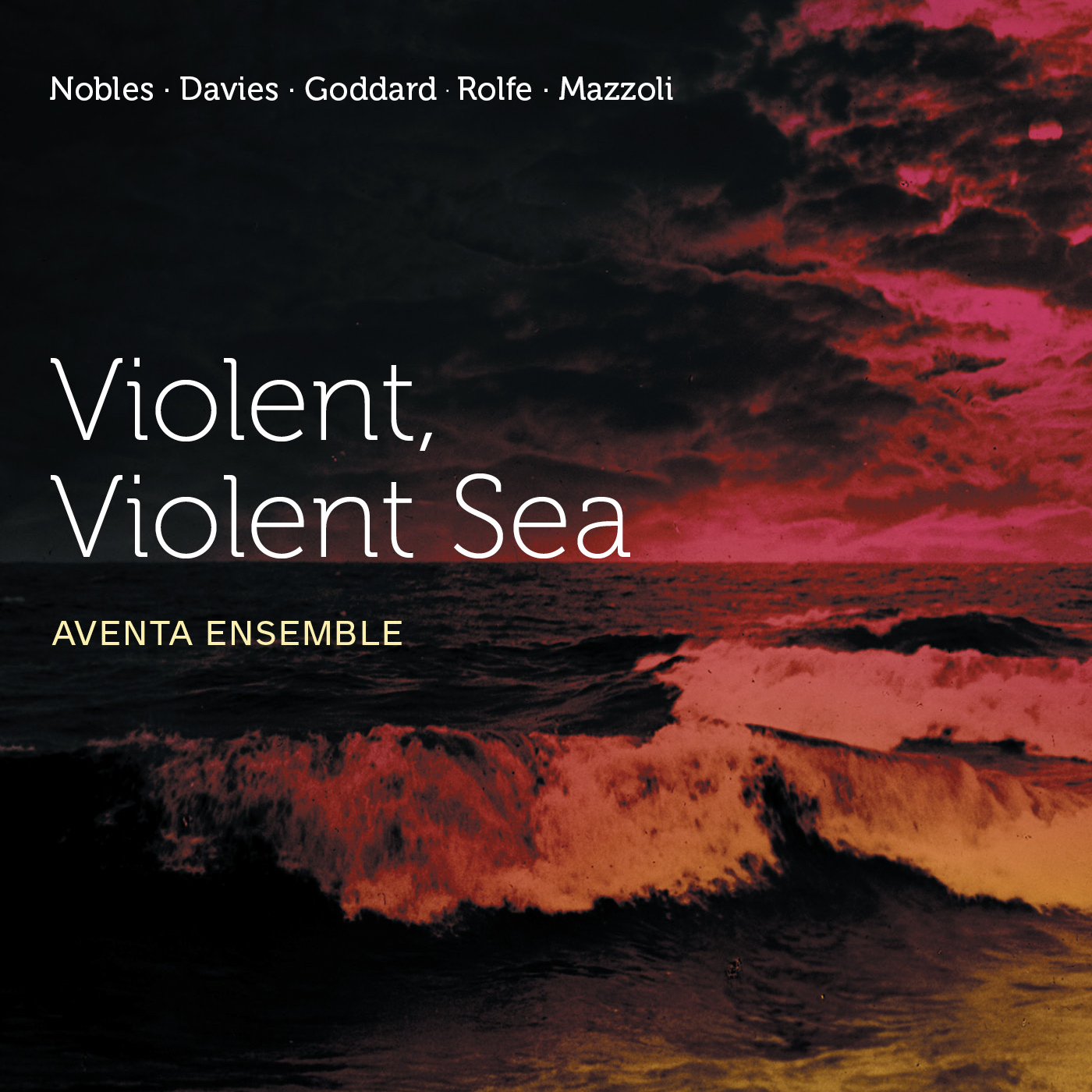Dharmoo, Ristic, and Tremblay
TRACKS
1. Wanmansho – Gabriel Dharmoo (11:34) Vincent Ranallo, baritone
2. Six apparitions de Lénine sur un piano – André Ristic (15:27)
3. À quelle heure commence le temps? – Gilles Tremblay (29:47) Vincent Ranallo, baritone / piano, Miranda Wong
Total duration: 56:50
PERFORMERS
Aventa Ensemble
Vincent Ranallo, baritone
Bill Linwood, conductor; Mark Takeshi McGregor, flute; Russell Bajer, oboe; AK Coope, clarinet; Jenny Gunter, bassoon; Darnell Linwood, horn; Lou Ranger, trumpet; François Levesque, trombone; Corey Rae, percussion; Roger Admiral/Miranda Wong, piano; Muge Buyukcelen, violin; Cory Balzer, violin; Mieka Michaux, viola; Alasdair Money, cello; Darren Buhr, doublebass
CREDITS
Produced by Aventa Ensemble
Recorded live in concert:
Wanmansho – Mar. 1 2020, Victoria, BC
Six apparitions de Lénine sur un piano – Oct. 17 2010, Victoria, BC
À quelle heure commence le temps? – May 29 2011, Malmö Academy of Music, Rosenberg Hall (European premiere)
Digital Editing and Mastering: Bill Linwood
CD design: Denise Burt, Elevator Graphics
Cover Artwork: Denise Burt using original image by Crusty Da Klown, ‘Ritual’
Commissions: Aventa gratefully acknowledges the support of the Canada Council of the Arts for the commissioning of Andre Ristic’s Six apparitions de Lénine sur un piano
Special Thanks: Kirk McNally (University of Victoria); Canadian Music Centre
Wanmansho is available from:![]()

![]()
![]()
![]()
![]()
TK507 © 2021 Redshift Music
Gabriel Dharmoo studied composition and analysis at the Conservatoire de musique de Montréal with Serge Provost, graduating with the highest honours. Performed worldwide, Dharmoo has received many awards for his compositions, such as the Canada Council for the Arts Jules Léger Prize for his chamber work Wanmansho (2017) His personal musical style encourages the fluidity of ideas between tradition and innovation. As a vocalist and interdisciplinary artist, his career has led him around the globe, notably with his solo show Anthropologies imaginaires, which was awarded at the Amsterdam Fringe Festival (2015). Since 2015, Gabriel is a PhD candidate at Concordia University’s PhD “Individualized Program” with Sandeep Bhagwati (Music), Noah Drew (Theatre) and David Howes (Anthropology).
Wanmansho is the greatest ambassador of his culture’s form of sung theatre. Tonight, you are privileged to observe his celebration of preparatory rites, as well as his remarkable rendering of the Shreu and Djonr myth.
André Ristic was born in 1972 in Quebec City, where he received his basic musical training. In the 1990’s, he continued his studies in Montreal in piano, harpsichord, composition and mathematics. He has performed with Ensemble contemporain de Montréal, Trio Fibonacci and l’Ensemble Musiques Nouvelles. An internationally recognized composer, André’s works share the common themes of humor and speed. Depending on the phase of his career, his works can often be quite esthetically distinct from one another.
“Six Apparitions de Lénine sur un piano was intended as the sequel to Sonate de Carnaval, which Aventa premiered in 2009. My plan with the original work was to explore the general sonata form and see if I could find some elements that would fit with my usual musical (somewhat delirious) ideals. As I like to “search and explore” in all of my pieces, I put myself in the position of a man stranded on an island, having to build everything with what is available on site, the island being the sonata form and in particular a few representatives of its offspring. I was, however, not completely satisfied with the completed work, because it became apparent to me that I had only explored but a small part of a bigger island than I had originally thought it was – probably because of my lack of good cartographic instruments for the purpose.
Six Apparitions de Lénine sur un piano is a second visit to this island, more precisely to the ‘scherzo’ region of it. In the past, the term scherzo used to imply some degree of légèreté, eventually even satire or joke (this is Charles Ives’ interpretation in a famous piano Trio). I envisioned the work as a collection of everything ranging from vaguely joyous to pathetically comic and caricatured, and as such the piece is a catalog of positive clichés (cliché, in the photographic sense; positive, as opposite of sad, dark, even serious or introspective), the whole of them organized in a zero-thematic scherzo form, with the piano as the central instrument – perhaps representing the composer walking or running through an environment populated by exhilarating, “phantasmical” musical objects, assembled in short obsessions.”
The title refers to a painting by Salvador Dali (1931) depicting a man sitting in front of (but quite far from) a piano, whose keyboard sports 6 regularly spaced phosphorescent busts of Vladimir Lenin. There are other psychoanalytically interesting elements (ants, cherries etc.) on the painting making it a typical ‘chronically paranoia’ Dali work. In the music, the piano part is the only one having a link with the painting (it has 6 sections, presenting musical material that I associate on an intuitive level with Poland, Russia, communism, tyranny). All of the rest has no relation with the painting, but I decided on the title a little like a novelist or filmmaker would choose a single quote for the title of the work – perhaps a simple sentence that might have little or no link with the plot of the whole work. Also, I think the composition and the painting share a desire for intuition, irony, and enigma.” – André Ristic
One of Canada’s foremost composers, Gilles Tremblay traveled an exemplary route. The Quebec pianist and composer has never stopped pushing back the frontiers of his research. His contribution to contemporary music is remarkable, distinguished as it is by an exceptional open-mindedness and a keen awareness of the very nature of sound. Tremblay received his early music training in Montreal from Jocelyne Binet, Edmond Trudel and Gabriel Cusson; later on, he attended the Conservatoire de musique de Montréal where he studied piano with Germaine Malépart and composition with Claude Champagne. He pursued his studies in Paris with Olivier Messiaen, Yvonne Loriod, Maurice Martenot and Andrée Vaurabourg-Honegger, receiving a First Prize in musical analysis as well as a First Medal in ondes Martenot at the Conservatoire de Paris.
Upon his return to Quebec, Gilles Tremblay undertook numerous activities, dividing his time between teaching at the Conservatoire de musique du Québec and working for CBC radio. In spite of his busy schedule, he pursued his own research, composed music, received many commissions and dedicated much time to the sound installation for the Quebec Pavilion at Expo ’67, which won him the Calixa-Lavallée Prize. Major works include Fleuves (1976), Vers le Soleil (1978) and Compostelle I (1978), a tribute to Messiaen on his 70th birthday. Acclaimed for its richness of sound and aesthetics, Tremblay’s music has earned an international reputation and strongly influenced the development of music and contemporary art in Canada.
Gilles Tremblay’s 1999 work À quelle heure commence le temps? for baritone, piano soloist and 15 instrumentalists, is based on the text of Quebec poet Bernard Lévy. The work was commissioned by Nouvel Ensemble Moderne (Montreal) with the assistance of the Canada Council for the Arts.
“Words, music. The words enter into the resonance. The musician will be further struck by certain words, certain ideas. Elucidation and commentary, the enchantment takes form (like Gregorian vocalisation and exaltation) establishing itself as another poem, a musical one, in counterpoint from to the first.
An initial reading highlights the important moments and the metaphysical aspect of the question: “when does time begin? At what hour? At what instant? At which first instant?” However, the drama unfolds progressively, in a parallel movement to the composition, to the limits of endurance, like an immense metaphor of our époque and transition into a new millennium; it is thus a navigation. At the very heart of this navigation-poem: shipwreck and death. However, the word “light” is engraved there (“light of the sea”) like an indelible desire. Its genesis is in the luminous splashes of the instrumental prelude radiating from the piano and especially at the end, a jet of rays, an epiphany, passionate as the pounding of waves.” – Gilles Tremblay
Further information: https://aventa.ca/gilles-tremblay/
Vincent Ranallo brings vocal passion and precision to a vast repertoire, ranging from early Baroque to avant-garde, with a strong emphasis on the latter. A graduate from the Conservatoire de musique du Québec à Montréal, he studied with Marie Daveluy and Gilles Tremblay. He was awarded a Ph.D in voice performance from the Université de Montréal, studying under the supervision of Rosemarie Landry and Mark Pedrotti. Mr. Ranallo has performed with many leading ensembles including the McGill Chamber Orchestra, I Musici, Orchestre Métropolitain, ECM+, Aventa, SMCQ, KORÈ ensemble, Chants Libres and Les Voix Humaines.

With a reputation for superb performance and ambitious programming, Aventa has established itself as one of Canada’s leading contemporary music ensembles. Comprised of musicians who are passionate about new music and its place in our culture, Aventa pushes musical boundaries through diverse projects, collaboration, and cultural exchange. https://aventa.ca/
